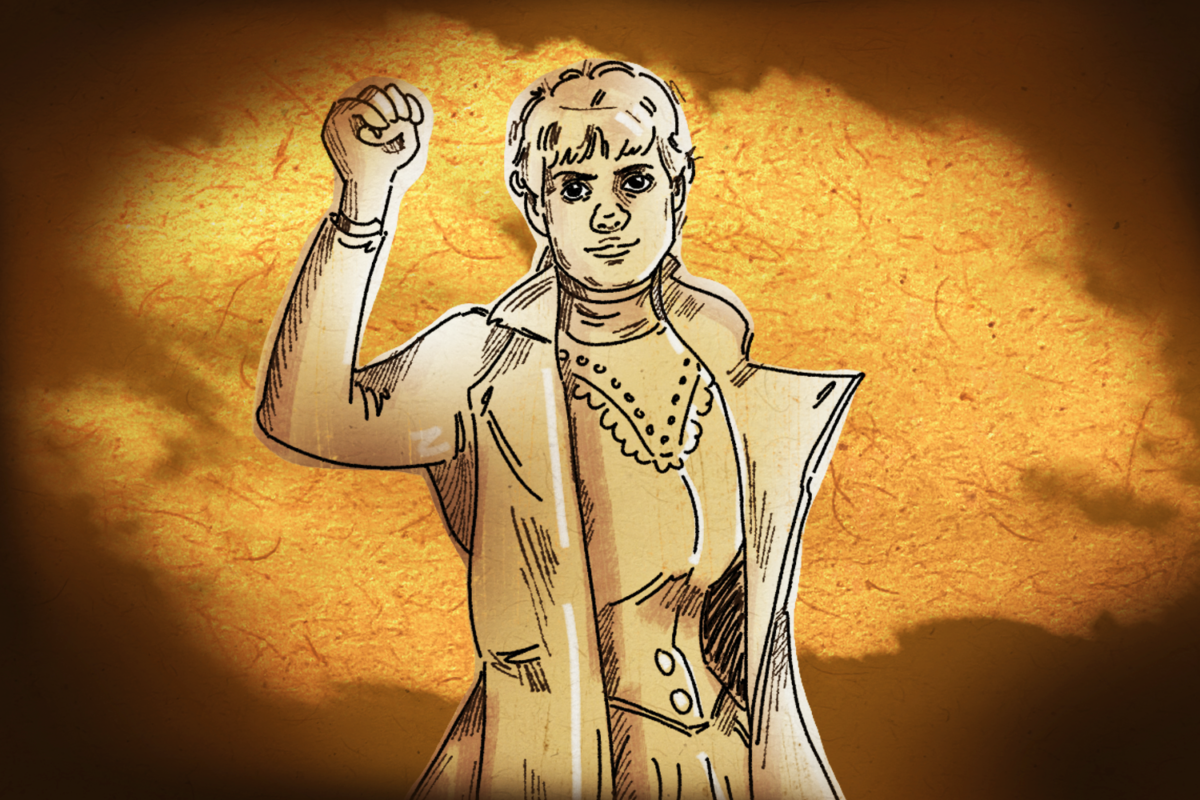From Ten Days in a Mad-House to touring the world in high heels
A girlboss of her time, Nellie Bly — born Elizabeth Cochrane — was an American journalist who was famous for her investigative undercover work.
She was born in 1864 and went to school until the age of 15, but struggled to find work, even more than her brothers who were less educated than her.
In 1885, she wrote a response to an editor at the Pittsburgh Dispatch after they published an article titled “What Girls Are Good For” that criticized the presence of women in the workforce. In her response to the column, she argued for more opportunities for women in the public sphere. The editor was impressed by her writing, and this kick-started her career as a reporter.
When she started working for the Dispatch, she began writing under the pseudonym Nellie Bly because it was considered inappropriate for women to write under their own name. So, it only made sense that all of the men in the newsroom came together to find her a “catchy” nom de plume, which turned out to be inspired by a racist form of entertainment.
Although Nellie Bly made the name a feminist reference today, it is actually the misspelled version of the minstrel song Nelly Bly by Stephen Foster. Minstrel songs were made specifically for minstrel shows, a racist form of theater that was prominent in the 19th century.
Despite bringing great reporting on the conditions of working women at the Dispatch, Bly’s editors confined her to writing on women’s issues. In a time where women were hired as reporters mainly for the “women pages,” Bly wanted to do investigative work.
To be less restricted, she moved to New York in 1886, but struggled to find work as a woman reporter. A year later, Bly stormed into the office of none other than Joseph Pulitzer and asked to report on immigrants in the United States. Although he refused her pitch, he challenged her to look into the Blackwell’s Island mental asylum for New York World.
Not only did Bly accept the challenge, she committed herself to that piece by faking mental illness to get herself admitted into the institution. During her time there, Bly investigated claims of abuse and neglect in the women’s unit. She also dropped her act and started acting “normal,” even asking to be let go, but to no avail. After ten days of trying to convince the staff that she was a reporter, the New York World had to come rescue her from the asylum.
Bly’s discoveries were published in a series of articles in the paper, followed by a book called Ten Days in a Mad-House. Not only did her investigative reporting lead to a grand jury investigation of the asylum and brought more funding for the Department of Public Charities and Corrections, it also became one of the most iconic pieces of undercover journalism.
The ease with which she was able to trick doctors into thinking she was insane also ensured future examinations to be more thorough.
She continued to publish regular exposés on corruption in the legislature and jails, as well as continuing to advocate for the working class.
In 1889, she was inspired by Jules Verne’s Around the World in Eighty Days to beat fictional character Phileas Fogg’s record travel. Bly read the book and was inspired to beat Fogg’s record.
The New York World published daily updates of her journey, even running a contest where readers could guess how much time it would take her to travel the world. Bly travelled the world by train, boat and horse, wearing a full gown, heeled boots and corset, the traditional attire for women at the time.
She completed the tour in 72 days, 6 hours, 11 minutes and 14 seconds, setting a new world record. It didn’t take long, however, for a businessman to take her glory and complete the challenge in 67 days.
Nellie Bly was a pioneer in her field as an investigative journalist and continues to be an inspiration for women today.
HERstory Lesson is a new column presenting all the “bad girls” in history, or the ultimate girlboss summit.
